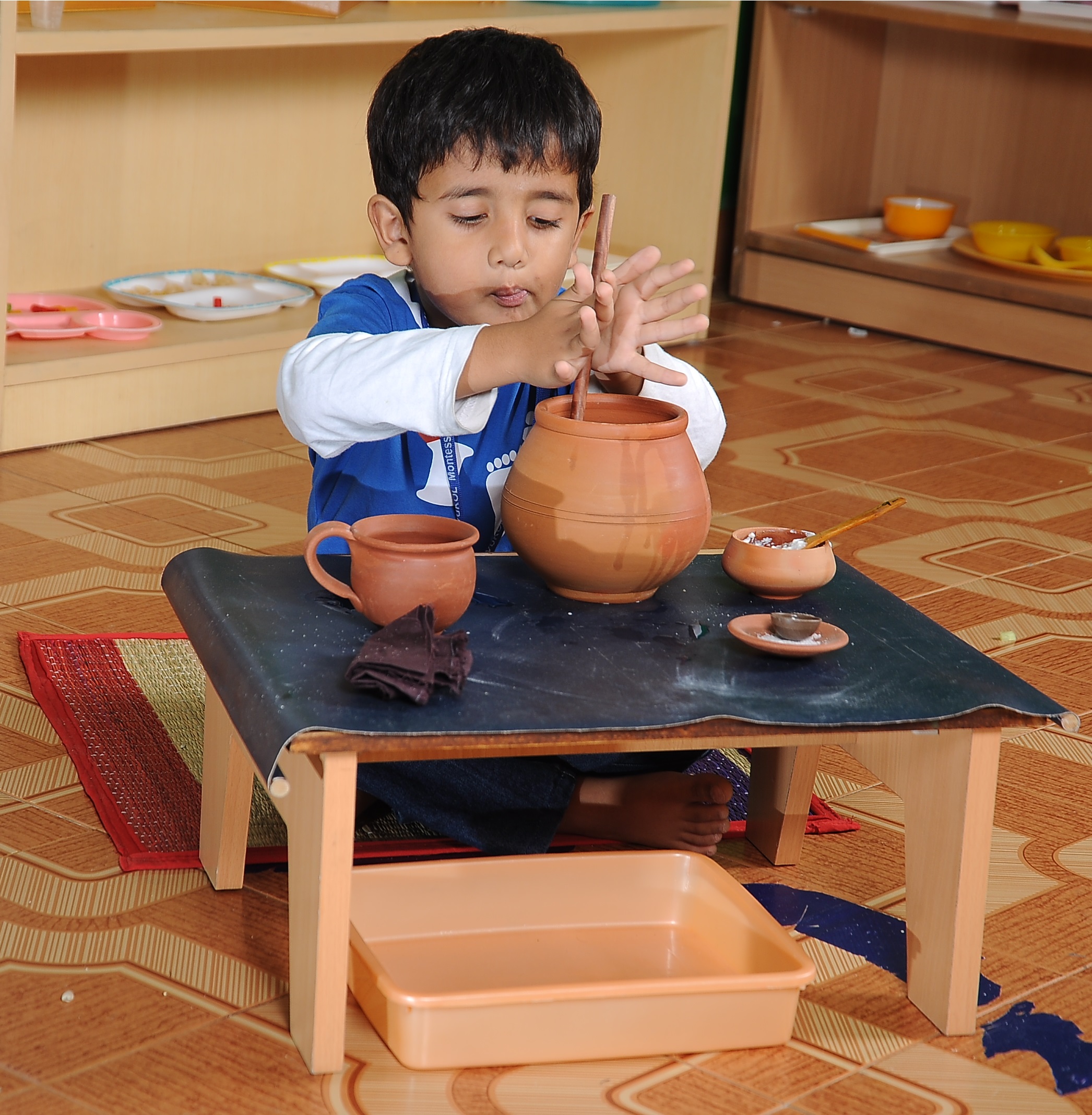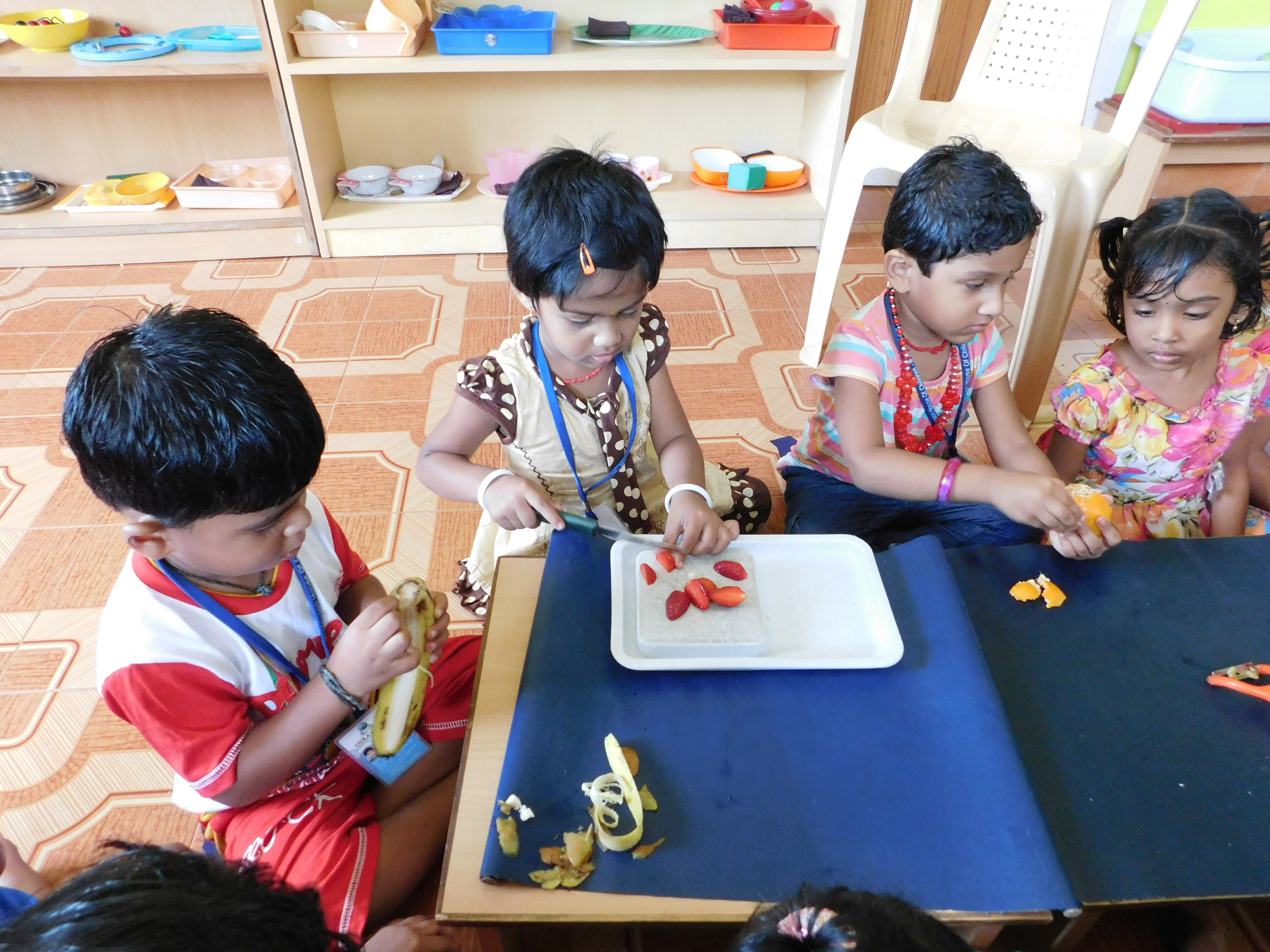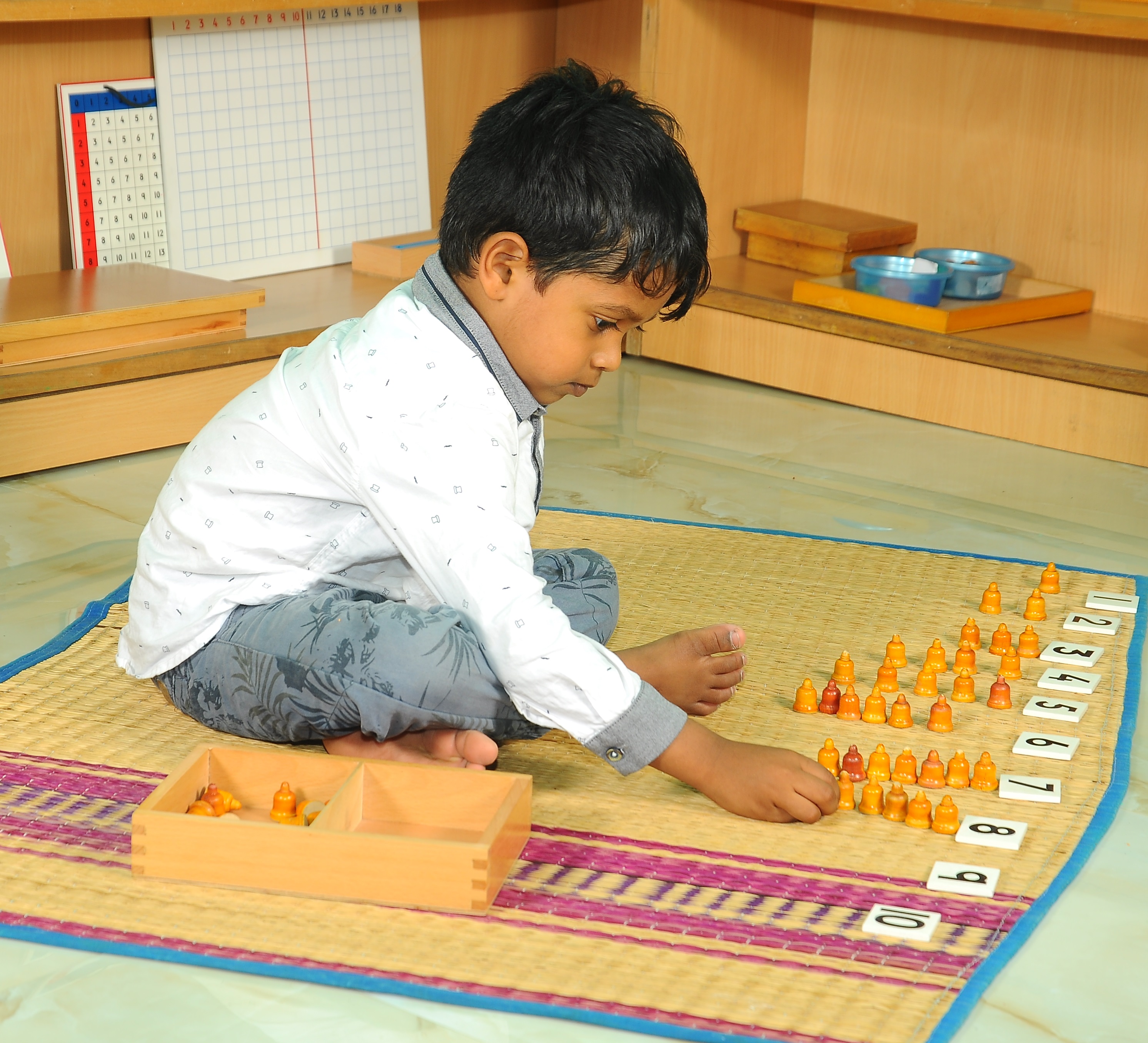Environments
Primary Montessori
Sensorial Learners – Learning through senses
The Primary environment is for children from 2.5 to 6 years. The primary classrooms are dynamic, wonder-filled spaces that are designed to meet the needs of the young child. We address the child’s need for beauty, order, movement, independence, and the freedom to make choices and discoveries for him/herself. The three-year age span of these classes helps to create a community in which children feel a strong sense of belonging. Our children are confident learners filled with a joy of learning and a sense of their importance within the community. Early childhood is a time of immense growth and development. The foundation for a child’s emotional, intellectual, social, and moral life is formed during these crucial years.



We follow the Montessori philosophy to arrive at a child-friendly, learner-centric curriculum for all our students. The curriculum is implemented with conscientious care by our team of qualified and committed teachers. The Montessori Curriculum is an innovative learning framework that incorporates specific learning outcomes and knowledge skills that align with children’s developmental needs and interests.
Contact usPrimary Curriculum
Practical Life Exercises are very heart of our curriculum and the child can learn how to do living activities in a purposeful way to adapt the society. These activities develop child’s physical co-ordination, development of order, task organization, social skills, emotional growth as well as cognitive preparation. Some of the Practical Life exercises include pouring, cutting, squeezing, sweeping, polishing, carrying water, Flower Arranging and wiping a table. Special Montessori materials enable him/her to lace, tie, button, snap and use many other fastening devices.Practical Life Exercises are grouped into four categories: Elementary Movements, Care of Environment, Care of Self and Social Grace and Courtesy.
Sensorial Materials are designed to sharpen the senses of the young child and enable the child to understand the many impressions he/she receives through them. Each of the Sensorial Materials which are precise to assist the child in understanding the sensorial dimensions of the world and to develop the child's perceptual abilities in the discrimination of size, colour, shape, sound, texture, temperature, taste and smell. These materials also help to prepare the child to be a logical, aware and perspective person.Through work with the sensorial materials, the child is given the keys to classifying the things around him/her, which leads to the child making his/her own experiences in his/her environment. These also help the child to acquire prehensile co-ordination of the 3 writing fingers to help him/her hold the pencil for writing.
Language is a continuous and natural process in the Montessori House of Children. Our language curriculum is based on a carefully structured phonic approach to language. Experiences gained from the Practical Life and Sensorial materials serve as a preparation for reading and writing. The sand paper letter provide strong phonetic basis for reading where the child hears the sound, sees the shape and through tracing trains the muscles needed for writing. The pre-cut letters of moveable alphabet help the child to build the words by phonetically listening to the sounds in succession and placing the right symbol for each sound. He/she is then ready to pursue an interest in words while cultivating writing skills at an individual pace. The total language environment includes verbal storytelling, poetry, story books, discussions, vocabulary lessons and everyday speech to enrich child’s vocabulary. Tamil and Hindi are taught as second and third languages through Montessori materials.
Classrooms are filled with stimulating Montessori mathematics materials designed to promote primary student growth in understanding mathematical concepts. The child gets sensorial impressions of the mathematical concepts and movement supports the learning experience. In THIRAVUKOL mathematical environment children are given a good foundation and evolve from the study of concrete mathematical concepts to abstract ones. With the help of the Montessori materials, the child begins to recognize the shapes and names of numbers 0 to 9. Quantity is introduced and the child relates the written number with its specific physical quantity. Dr. Montessori said that a mathematical mind was “a sort of mind which is built up with exactity.”
Montessori cultural materials provide individual activities, which helps the child to acquire knowledge in the areas of zoology, botany, geography, history, art and science. Children are offered culture in the form of festivals and celebrations conducted through-out the year. Dr. Montessori felt that having knowledge and understanding of such subjects is what makes one a “cultured” person.
BotanyBotany introduces the child to parts of a plant by practically experiencing the lifecycle of a plant and through field trips to help them appreciate nature's diversity. The school has a large outdoor area where children indulge in simple gardening activities and learn to explore nature.
ZoologyChildren through Zoology are able to satiate their fascination and curiosity for animals by learning more about their classification, lifecycles and their habitats.
GeographyIn Geography the children would be introduced to the water and land bodies, globe, the continents, the countries and peoples of the world and the Solar System.
HistoryHistory study, builds in the child a clear sense of time passage which is the foundation of a well-developed historical perspective.
ScienceChildren are natural observers and active investigators. Simple Science experiments are shown to the children to develop their practical life skills and to further explore their understanding of the natural world.
In Art and Craft the children display a reasonable control of movement, fine motor skills and eye/hand coordination, having been encouraged to express themselves in artistic ways. We seek to strike a balance between skill instruction and free exploration and to encourage a child’s natural desire for self-expression.
Our benefits
- Mixed-age classrooms
- Creating self-driven learners
- Building concentration & attention span
- Establish a work cycle
- Develop language from writing then to reading
- Understand social relationships
- Mathematical concepts and skills